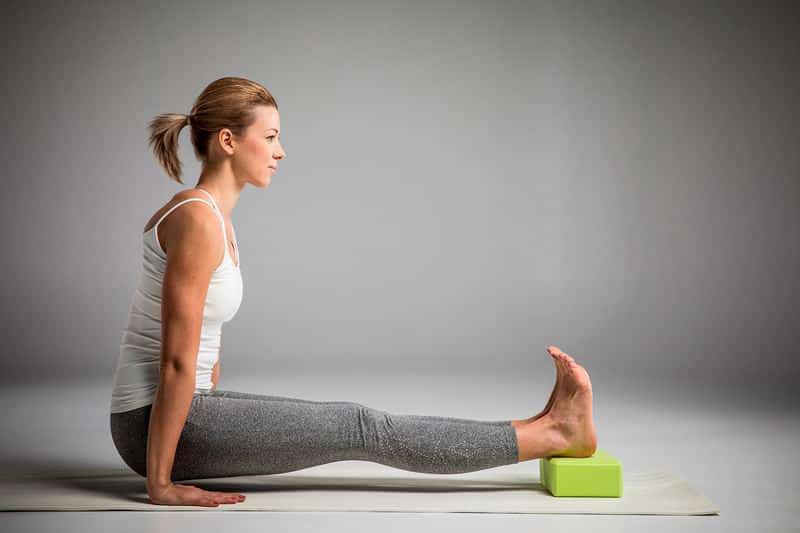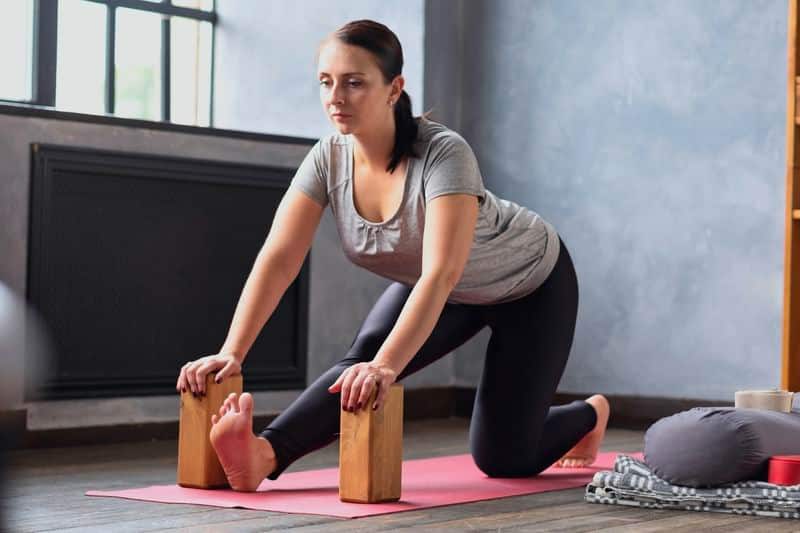Yoga props were popularized by the late B.K.S. Iyengar as tools to support the body to allow a deeper expression of a yoga pose’s alignment. A yoga block or yoga brick is one of the most popular yoga props to use in a yoga class. Yoga blocks are most often used as an extension of one’s hands but are also used to support the back, head, and hips, and to deepen awareness of alignment. Most yoga studios have blocks available to borrow, but you may wish to purchase your own. Having your own set of blocks will be more sanitary than borrowing them, and you can use them in your home practice. When purchasing a yoga block you will need to consider size, material, cost, and quantity.
1. Are yoga blocks necessary?
The short answer is no—blocks are not necessary to use in yoga. But it is common for yoga instructors to suggest or require the use of one or two blocks for their classes. A yoga block is most helpful for beginning students and those experiencing injury or other physical limitations, but more advanced practitioners can utilize props to safely learn new challenging poses. Also, advanced yogis may have specific body proportions that make certain poses difficult and need blocks to fully access and experience them.
It is easy to think of yoga props as a crutch or as something only beginners need to use. Practitioners will also avoid them because they can often feel cumbersome and break the flow and experience of a class. There are many ways to use blocks to deepen and expand your yoga practice. Using yoga blocks in your yoga practice can:
It is easy to think of yoga props as a crutch or as something only beginners need to use. Practitioners will also avoid them because they can often feel cumbersome and break the flow and experience of a class. There are many ways to use blocks to deepen and expand your yoga practice. Using yoga blocks in your yoga practice can:
- Make asanas more accessible by adding length to your limbs.
- Create more balance in standing poses.
- Help prevent injury by reducing overreaching and strain.
- Encourage proper alignment and a deeper understanding of the asanas.
- Add support to allow you to relax and soften into the experience of the asana.
- Deepen the activation of muscles and add more challenge to basic asanas

2. Yoga block dimensions
Ideal size for a yoga block is 9 x 4.5 x 3 inches. The most common yoga block dimensions are 4″ x 6″ x 9″ but you will find blocks that are both larger and smaller than this. Choosing a larger or smaller block will depend on the size of your hands and the level of your flexibility. If you have small hands and are fairly bendy you might want to consider a smaller sized block. Conversely, if you have larger hands and less flexibility think about choosing a larger block. Half-sized or smaller blocks can also be helpful when you need a height between one and two blocks.
3. Yoga block shapes
The traditional yoga block is the shape of a rectangular brick. You will also find blocks that have different proportions than the standard 4″ x 6″ x 9″ size as well as other shapes. Curved, rounded, or egg-shaped blocks will be the most comfortable for reclining poses and supporting your spine in back bending asanas.
4. Choosing between foam, wood, and cork blocks
Originally yoga blocks were made of wood, but now blocks also come in both foam and cork. Their materials will change their weight, durability, sweat-absorption, rigidity, and affordability. Your choice of yoga block will be determined by the type of classes or style of yoga you practice as well as your budget and personal preference.
1) Wood yoga blocks
wood yoga blockHollow wooden yoga blocks are often made of bamboo, birch, maple, pine, balsa, and poplar. Harder woods will be more durable, while softer woods will be lighter. Wooden blocks are comparatively hard and heavy (they usually weigh between 1.5 to 2.5 pounds) but are very sturdy, more aesthetically pleasing, and will last forever. The downsides to wooden blocks are that they are expensive, they become slippery with wet hands, can slide around when placed on a hardwood floor, and do not always stack very well. Wood blocks will also be uncomfortable to use for restorative yoga classes or to rest the weight of your body. This can be remedied somewhat by placing padding on top of the blocks.
2) Cork yoga blocks
cork yoga blocksCork yoga blocks can be more eco-friendly than wooden ones (depending on how the wood and cork are harvested) and cork blocks are softer and weigh less than wood (between one and two pounds). They stack and store well, but unfortunately, cork absorbs sweat, moisture, and odors which may eventually cause them to smell funky and become crumbly or dented as they wear. Thus, cork blocks will require regular cleaning and will not last as long as wood blocks.
3) Foam yoga blocks
foam yoga blocksFoam yoga blocks are less expensive than cork and wood, are more lightweight (weighing between 3 and 12 ounces), and are very soft. Because of their low cost, durability, and ease of cleaning they are the most common blocks found in yoga studios. Foam blocks are best for restorative yoga classes or when used to support the weight of your body in yoga poses. The downsides to foam blocks are that foam can get dirty and wear easily, and they are not as eco-friendly as wood or cork. At times, they can also feel flimsy or less stable when used for support in active poses.

5. How many yoga blocks do you need?
Most of the time you will only need one yoga block, but there is a good chance that you’d regret not buying two. There are a few advantages of purchasing two blocks at once. Firstly, you will have a matching set and won’t need to remember the size, brand, and color later on. Second, you may often find that having a block in each hand or stacked blocks will offer more support which will lead to a wider range of poses you can attempt during your practice. Even though purchasing two blocks at once will be more expensive, you can find sets of two blocks that are cheaper than buying two separately. Purchasing a second block later on may require you to pay more in shipping costs. If you happen to not need the second one you can always gift it to a yogi friend!








